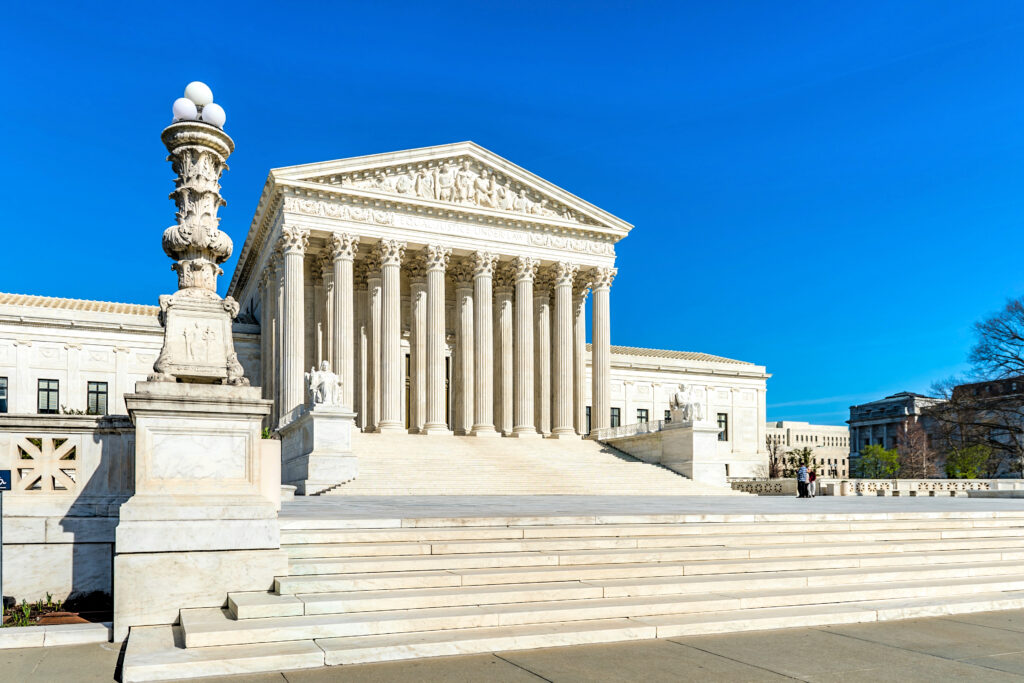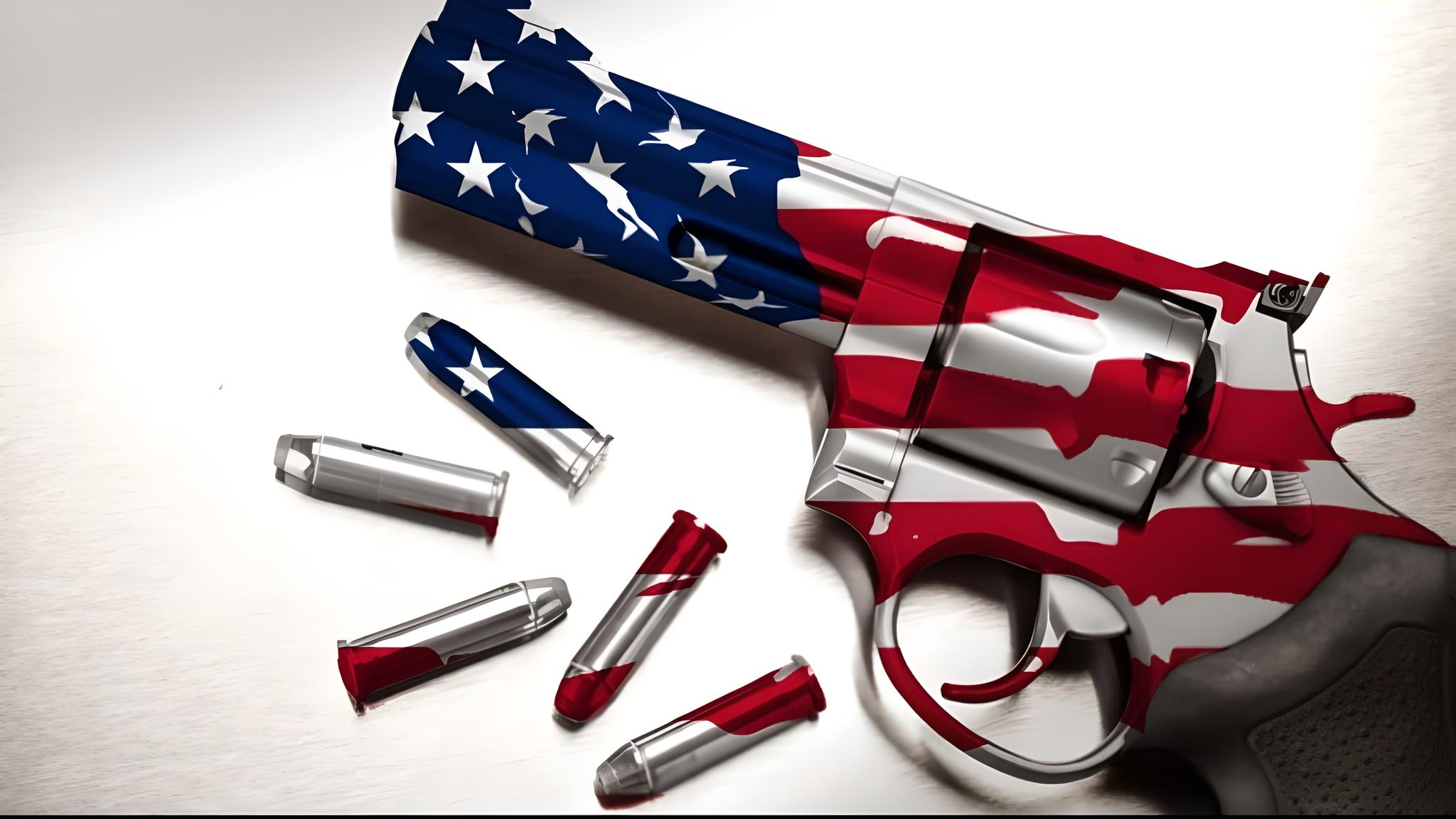By Richard Luthmann
Federal law currently bans non-violent felons from possessing firearms. Many states, including Florida, have counterpart measures. The U.S. Supreme Court will soon decide whether the Second Amendment allows this deprivation of liberty. A Supreme Court decision could overturn gun bans for non-violent felons.
The High Court will issue two critical decisions in the coming days.

United States v. Rahimi is a pending case regarding whether the government can prohibit firearm possession by a person with a civil domestic violence restraining order. Rahimi has no criminal domestic violence conviction or charge. The companion case is Garland v. Range, regarding whether the government has the authority to strip non-violent felons of their right to bear arms automatically.
Pennsylvania authorities convicted Bryan David Range nearly 30 years ago for making a false statement to obtain food stamps. He spent no time in prison. However, making false statements could have been punishable by up to five years imprisonment under the relevant Pennsylvania statute. Under §922(g)(1), the government stripped Range of his right to possess firearms because he faced more than one year in prison. He is forever ineligible to own a gun. Range first learned about this restriction when he attempted to purchase a deer-hunting rifle in 1998.
Range believes his Second Amendment right to bear arms is more powerful than the government’s ability to keep them from him. He sued Attorney General Merrick Garland. This issue focuses on 18 U.S.C. § 922(g)(1), part of the Gun Control Act of 1968. The law bars felons from owning guns. Penalties can range up to five years imprisonment.
The debate has split federal courts. The Third Circuit, covering New Jersey and Pennsylvania, ruled the ban unconstitutional for non-violent offenders. The St. Louis-based Eighth Circuit upheld it for all felons.
Florida’s stringent gun laws include mandatory minimum sentences for felons in possession. The Supreme Court decision could overturn gun bans for non-violent felons, resolve the circuit split, and set a precedent that could reshape gun control legislation nationwide.
Circuit Split and the Supreme Court Challenge
In Range, the Third Circuit’s en banc panel recently declared this statute unconstitutional for non-violent offenders. In 1995, Range, who earned between $9.00 and $9.50 per hour, underreported his income to qualify for food stamps. When his false underreporting was discovered, he raised three children and was improperly enriched by $2,458. Range served three years’ probation without incident. In contrast, the Eighth Circuit upheld the statute’s application to all felons.
The Third Circuit’s decision by 15 judges exposed serious legal faultlines. Three judges in the majority noted they would permit disarming individuals who “would, if armed, pose a threat to the orderly functioning of society.” Four judges dissented, arguing that the majority’s opinion lacked historical support for disarming any felon.
Historical Context and Legal Precedents
Historically, the idea of permanently barring felons from gun ownership is recent. During the Founding Era, individuals often regained the right to bear arms after serving their sentences for serious crimes. Disarming felons only became common in the 20th century and lacks direct historical analogs from the Founding era.

In District of Columbia v. Heller, Justice Antonin Scalia’s opinion stated that prohibitions on felons owning firearms are “longstanding” and presumably lawful. Justice Alito reiterated this view in McDonald v. City of Chicago. However, in New York State Rifle & Pistol Association v. Bruen, the Court, led by Justice Clarence Thomas, required gun regulations to align with historical traditions.
In their concurring opinion in Bruen, Justice Brett Kavanaugh and Chief Justice John Roberts reiterated that the decision did not question the validity of felon-in-possession laws. However, this stance appears inconsistent with the historical analysis required by Bruen.
The Supreme Court’s Dictum
The Supreme Court’s previous statements on this issue have created confusion. In Heller, the Court revived the Second Amendment. The late Justice Antonin Scalia authored the opinion. The Court ruled that individuals have the right to keep handguns in their homes for self-defense.
The Heller opinion included a statement that “nothing in our opinion should be taken to cast doubt on longstanding prohibitions on the possession of firearms by felons.” This declaration was reportedly included at the insistence of Justice Anthony Kennedy to secure the majority’s support.

Justice Alito’s principal opinion reiterated Heller‘s assurance in McDonald v. City of Chicago, invalidating Chicago’s handgun ban. However, before joining the Supreme Court, Justice Amy Coney Barrett argued that the Second Amendment prohibited punishing nonviolent felons for possessing firearms. In a Seventh Circuit dissent, Coney Barrett described Heller’s statement as a “passing reference,” rendering it a non-binding dictum.
Dictum is any statement or opinion made by a court that is not required as part of the legal reasoning to make a judgment in a case. Dictum does not have the binding power of a legal precedent, and other courts are not obligated to adopt it. However, legal arguments often incorporate dictum.

The view that the mention of the possession of firearms by felons in Heller is dictum has fueled ongoing debates about the scope of Second Amendment protections for felons.
The High Court Scraps its Dictum?
Heller’s statement about the endurance of felon-in-possession laws was consistent with the Court’s ruling in that case and McDonald. It seems flatly inconsistent with the more recent decision in Bruen, holding invalid a New York statute that allowed someone to carry a handgun in public for purposes of self-defense only if they could show a particular need for self-protection. Rejecting a standard approved by eleven federal courts of appeal because this standard permitted “judge-empowering interest-balancing,” Justice Clarence Thomas’s opinion for the Court announced:
“When the Second Amendment’s plain text covers an individual’s conduct, . . . [t]he government must . . . justify its regulation by demonstrating that it is consistent with the Nation’s historical tradition of firearm regulation.”
Justice Clarence Thomas, New York State Rifle & Pistol Association v. Bruen
The government could satisfy this burden only by showing enough analogous historical regulations, and the Court said that legislation enacted after 1900 was too recent to count.
After reviewing dozens of English and American firearms restrictions between 1285 and 1901, the Court ruled that too few of them sufficiently resembled the New York statute to save it. Between 1607 and 1901, authorities flogged, branded, or imprisoned many thousands of Americans for serious crimes. After their punishment, they were allowed to possess and use firearms.
State and federal felon-in-possession laws fail the Bruen test more clearly than the statute struck down in Bruen. No historic analogs appear close enough to be acknowledged as “distinctly similar” and then dismissed as “outliers.”
Three Justices Say the Dictum Survives
Despite the tension between Heller’s dictum and Bruen’s holding, a concurring opinion in Bruen by Justice Brett Kavanaugh, joined by Chief Justice John Roberts, repeated the dictum verbatim. These justices insisted that Bruen, like Heller, did not “call into question” the felon-in-possession laws. Justice Alito’s concurring opinion declared that Bruen had not “disturbed anything we said in Heller.”
Justices Kavanaugh and Alito didn’t glance at history or explain how their statements could be reconciled with the Court’s holding. Their pronouncements were especially curious because Justice Stephen Breyer’s dissenting opinion in Bruen pointed out the “disconnect.” The concurring Justices seem not to have realized the implications of the standard they approved.
More than any other decision in Supreme Court history, Bruen asks whether the Court will follow its holding or dicta. Whatever the Court may conclude about nonviolent offenders, it probably will not decide that convicted mafia hitmen and gang-banger killers have a constitutional right to bear arms.
The Lower Courts Struggle
Until the Third Circuit decision, no federal court had held the felon-in-possession statute unconstitutional even in part, and after Bruen, more than two dozen federal district courts rejected challenges to this statute. Some courts did no more than rely on Heller’s dictum, reiterated by Justices Kavanaugh and Alito. They said things like:
“We cannot simply override a legal pronouncement endorsed by a majority of the Supreme Court, particularly when the supposed dicta is recent.”
Hengle v. Treppa (US Circuit Court of Appeals for the 4th Circuit)
The High Court effectively usurped a power the Constitution does not authorize, and the Court itself had not claimed—the power to make law by issuing unexplained pronouncements on issues not presented. This left the lower courts guessing.
Reconciling Heller and Bruen
Attempts to reconcile Heller and Bruen’s dictum with their holdings have been masterclasses in creative writing. Some courts maintained that the Second Amendment’s guarantee of “the right of the people to keep and bear Arms” does not include felons. According to these courts, Bruen described the holders of Second Amendment rights as ordinary law-abiding citizens “no fewer than fourteen times.” The Court held that everyone in the class it considered—ordinary law-abiding citizens—had a right to carry weapons publicly. Lower courts have treated this phrase chosen to set aside an issue as though it resolved the issue. But Heller explicitly says that the term “the people” warrants “a strong presumption that the Second Amendment right belongs to all Americans.”
Many of the courts that upheld the felon-in-possession statute claimed that all government-ordered disarmaments throughout English and American history were analogous to this statute. Although 17th, 18th, and 19th-century governments didn’t forbid firearm possession by felons, they did disarm other people, including Catholics, people who refused to swear loyalty to their states during the American Revolution, Native Americans, and Black people, both enslaved and free. While Courts may apologize for using this history of discrimination, they continue to rely on it. They say it demonstrates a “tradition of categorical, status-based disarmament.”
Courts who propose to strike down the felon-in-possession statute as applied to food-stamp cheaters but not as applied to violent organized criminals say that our tradition is one of disarming only people who “would, if armed, pose a threat to the orderly functioning of society.” Courts who would uphold the statute across the board say that our tradition is one of disarming groups legislatures saw as “unwilling to obey the law” or lacking “civic virtue.” The historical tradition is one of disarming whoever pleased the ruling authorities.
SCOTUS Should Strike Down Felon-In-Possession Laws – If Precedent is Followed
Bruen declared, “Constitutional rights are enshrined with the scope they were understood to have when the people adopted them.” It probed the past to discover whether a challenged modern regulation was one “our ancestors would have accepted.”
Analyzing the felon-in-possession statute in the same way the Court examined the statute it struck down in Bruen should render this statute invalid. This statute is “one our ancestors never would have accepted” because there were felons even in their day, and no one disarmed them. Declaring that Catholics and Black people are more nearly analogous to today’s felons than the felons our ancestors didn’t disarm shows how determined many lower courts have been to adhere to Heller’s dictum and sustain the statute.
Some courts have advanced even more dubious arguments to preserve the legislation despite its incompatibility with Bruen. Some found a historical analogy in the fact that poachers were sometimes required to forfeit the firearms they used to commit their crimes. After surrendering these weapons, however, the poachers could go home to pick up others. The government didn’t disarm them. Other courts have noted that some felons were executed. A Third Circuit dissenter declared: “A fortiori, the Founding generation would have had no objection to imposing on felons the comparatively lenient penalty of disarmament.”
However, SCOTUS would be hard-pressed to retain the felon-in-possession statute and purport to follow the law. It would require one heck of a “Potomac Two-Step.”
Florida’s Mandatory Minimums for Felons in Possession of Firearms
In Florida, possession of a firearm by a convicted felon carries severe penalties, including mandatory minimum sentences. If a felon is found in actual possession of a gun, they face three years in prison. Actual possession means the firearm is on the person, within their immediate control, or in a container they are holding.

Constructive possession, where the firearm is in a place under the felon’s control but not directly on them, carries lesser penalties but can still result in significant prison time. Florida’s 10-20-Life law imposes harsh sentences for firearm-related crimes, reflecting the state’s tough stance on gun control.
If the Supreme Court rules that 18 U.S.C. § 922(g)(1) is unconstitutional for non-violent felons, it could invalidate similar state laws, including Florida’s mandatory minimums. Thousands of incarcerated individuals who violated these statutes might seek to have their convictions overturned. This could lead to significant legal upheaval, affecting federal and state justice systems.
The ruling could also impact those who have completed their sentences but remain barred from owning firearms. A decision in favor of non-violent felons could restore gun rights to millions of Americans. This legal change would alter the landscape of gun ownership in the country.
Conclusion
The Supreme Court’s forthcoming decisions in Rahimi and Range will have profound implications for Second Amendment jurisprudence. Gun control laws across the United States may require revision. By addressing the constitutionality of the felon-in-possession statute, the Court will clarify the extent to which historical traditions shape modern gun regulations. The ruling could redefine civil rights, particularly for non-violent offenders.

